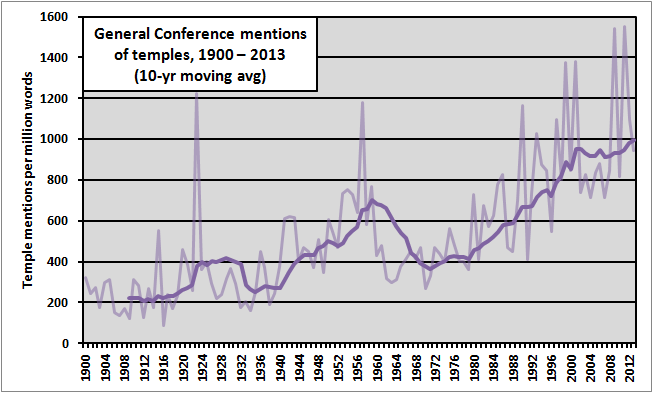Over at fMh yesterday, Sara Katherine Staheli Hanks introduced a new series, “When the Temple Hurts.” I was particularly interested in a point she made in the post about how often we discuss the temple in lessons and talks at church:
The temple is a regular focus of meetings, lessons, talks, and discussions in church settings. I’d estimate that, in my experience, 1 out of every 4-5 Sundays in my adult life as a church member has included a talk or lesson where the temple was a primary focus.
I’ve been teaching primary now for a couple of years, and my memory of adult classes is maybe suffering from a bit of haziness, but Sara’s numbers sound good to me. This would mean an average of at least one temple-related lesson or talk per month, with of course lots of variation where there is a cluster of them, and then maybe no mentions for a longer period of time.
I would be interested to know how well that matches up with other people’s experience. It seems like this would be a difficult thing to measure well. Sure, we have correlated lesson manuals, but we also have locally chosen topics for things like sacrament meetings, first Sunday meetings in RS and priesthood quorums, and Teachings for Our Time lessons. And for that matter, even how correlated lessons are taught varies a lot from ward to ward and from teacher to teacher (much to the frustration of the Correlation people, I’m sure).
So I thought I would look at a related question that’s easier for me to answer, which is whether talk about the temple at the general level of the Church has been increasing or decreasing over time. If there’s a noticeable change over time, this is probably felt by people in their local experiences, as general-level material like Conference talks are not only used directly in the preparation of lessons and talks, but they also likely help drive local leaders’ perceptions of what topics are important at the moment.
I used the ever-wonderful Corpus of General Conference Talks to look at how often the word temple has been used in Conference since 1900. This graph shows the result. The dark purple line is the 10-year moving average, and the faded purple line shows the year-to-year rates.
